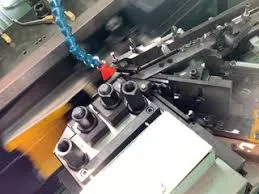
-
 Afrikaans
Afrikaans -
 Albanian
Albanian -
 Amharic
Amharic -
 Arabic
Arabic -
 Armenian
Armenian -
 Azerbaijani
Azerbaijani -
 Basque
Basque -
 Belarusian
Belarusian -
 Bengali
Bengali -
 Bosnian
Bosnian -
 Bulgarian
Bulgarian -
 Catalan
Catalan -
 Cebuano
Cebuano -
 Corsican
Corsican -
 Croatian
Croatian -
 Czech
Czech -
 Danish
Danish -
 Dutch
Dutch -
 English
English -
 Esperanto
Esperanto -
 Estonian
Estonian -
 Finnish
Finnish -
 French
French -
 Frisian
Frisian -
 Galician
Galician -
 Georgian
Georgian -
 German
German -
 Greek
Greek -
 Gujarati
Gujarati -
 Haitian Creole
Haitian Creole -
 hausa
hausa -
 hawaiian
hawaiian -
 Hebrew
Hebrew -
 Hindi
Hindi -
 Miao
Miao -
 Hungarian
Hungarian -
 Icelandic
Icelandic -
 igbo
igbo -
 Indonesian
Indonesian -
 irish
irish -
 Italian
Italian -
 Japanese
Japanese -
 Javanese
Javanese -
 Kannada
Kannada -
 kazakh
kazakh -
 Khmer
Khmer -
 Rwandese
Rwandese -
 Korean
Korean -
 Kurdish
Kurdish -
 Kyrgyz
Kyrgyz -
 Lao
Lao -
 Latin
Latin -
 Latvian
Latvian -
 Lithuanian
Lithuanian -
 Luxembourgish
Luxembourgish -
 Macedonian
Macedonian -
 Malgashi
Malgashi -
 Malay
Malay -
 Malayalam
Malayalam -
 Maltese
Maltese -
 Maori
Maori -
 Marathi
Marathi -
 Mongolian
Mongolian -
 Myanmar
Myanmar -
 Nepali
Nepali -
 Norwegian
Norwegian -
 Norwegian
Norwegian -
 Occitan
Occitan -
 Pashto
Pashto -
 Persian
Persian -
 Polish
Polish -
 Portuguese
Portuguese -
 Punjabi
Punjabi -
 Romanian
Romanian -
 Russian
Russian -
 Samoan
Samoan -
 Scottish Gaelic
Scottish Gaelic -
 Serbian
Serbian -
 Sesotho
Sesotho -
 Shona
Shona -
 Sindhi
Sindhi -
 Sinhala
Sinhala -
 Slovak
Slovak -
 Slovenian
Slovenian -
 Somali
Somali -
 Spanish
Spanish -
 Sundanese
Sundanese -
 Swahili
Swahili -
 Swedish
Swedish -
 Tagalog
Tagalog -
 Tajik
Tajik -
 Tamil
Tamil -
 Tatar
Tatar -
 Telugu
Telugu -
 Thai
Thai -
 Turkish
Turkish -
 Turkmen
Turkmen -
 Ukrainian
Ukrainian -
 Urdu
Urdu -
 Uighur
Uighur -
 Uzbek
Uzbek -
 Vietnamese
Vietnamese -
 Welsh
Welsh -
 Bantu
Bantu -
 Yiddish
Yiddish -
 Yoruba
Yoruba -
 Zulu
Zulu
THREAD ROLLING PROCESS
THREAD ROLLING PROCESS

THREAD ROLLING & PROFILE ROLLING
Through continuous innovation over its 60-year history. thread rolling processes provide significant advantages over thread cutting in strength and fatigue resistance and offer superior surface finish and material savings. Screw threads are used in applications such as fasteners, linear actuators, and fluid connections. Machine screws, bolts, wood screws, bone screws, threaded rod, pipe fittings, and lead screws are the most common types of threaded components produced.
Screw threads are typically rolled using an infeed, throughfeed, or plungefeed rolling process.two-die and three-die rolling processes can roll both solid and hollow parts to exact specifications. Precision thread class tolerance levels such as Inch Class 2A and 3A (6g and 4h/6h ISO Metric) are easily achievable by controlled thread rolling process.
Automatic nut and bolt threading rod thread rolling machine
BENEFITS OF THREAD ROLLING
|
|
THREAD & PROFILE GEOMETRY
Standard thread forms consist of a profile geometry described by straight side flanks with crest flat, root flat, and radius transitions at fixed pitch spacing. The 60° thread form with 30° flank angles is one of the most common thread profiles and has become a standard for fasteners around the world. The second most popular thread profile is the 29° ACME and Stub-ACME thread form with 14.5° flank angles.processes can produce not only these standard forms, but many variations of thread forms ranging from 10° to 30° trapezoidal thread profiles to 5° to 40° buttress thread profiles. Special thread forms like tapered or straight pipe thread profiles, ball screw thread profiles, rope thread profiles, and involute worm gear profiles are also possible. Most threads are rollable using the cylindrical die rolling process.

